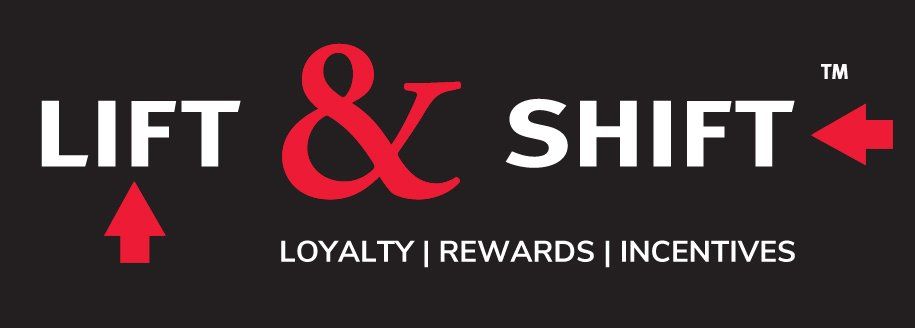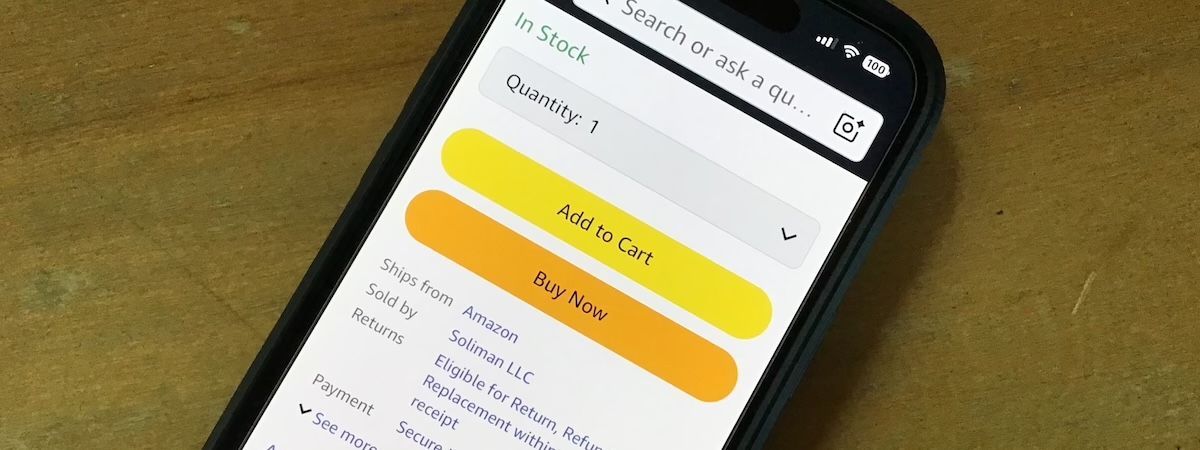How to Use a B2B Reward Program to Engage Your Sales Channel and Boost Customer Retention

Customer churn is a persistent challenge for any business. Studies show that keeping an existing customer is 5 to 25 times more cost-effective than acquiring a new one. Retaining your existing customers not only ensures steady revenue but also increases customer lifetime value.
One of the most effective ways to retain customers is by implementing a B2B customer reward program. A well-designed reward program strengthens relationships, drives year-over-year sales growth, builds loyalty, increases engagement, and incentivizes long-term commitment. Let’s explore how a B2B customer loyalty program can achieve customer retention, motivate your sales channel and help your business maintain a stable sales base.
Why customer retention matters in B2B markets
In B2B, customer relationships take time to build and maintain. Unlike B2C, where purchases are often impulsive, B2B customers make strategic decisions based on long-term value, trust, and consistent service.
Customer churn is often influenced by factors such as:
- Lack of engagement—where customers lose interest due to infrequent interactions by the sales channel or lack of value-added services.
- Competitive pressure—If competitors offer better pricing, service, or incentives, your channel partners may lose focus on your goods, and your customers can be lured away.
- Ineffective communication—Lack of personalized interactions and poor customer or channel support can lead to disengagement.
- Failure to adapt to customer or channel needs—If your business is failing to evolve with your customers' or channel partners’ changing demands, you risk losing their loyalty.
Designing a program to specifically nurture these factors can significantly enhance channel engagement and customer retention. Key factors include:
- Strong engagement—Frequent, value-driven interactions will strengthen relationships.
- Segmentation—Use of historical sales data to segment customers and channel partners by purchasing or sales behavior and treat each segment differently.
- Competitive differentiation—Offering appealing rewards makes your brand stand out from the competition.
- Effective communication—Monthly reward statements with key program data points keep your channel and customers informed and motivated to direct more spending to you.
- Adapting to market conditions—The needs of customers and channel partners change. Program flexibility, updates, and enhancements are vital for the long-term success of your program.
Best strategies to achieve B2B customer retention
1. Leverage data for proactive customer retention
Reviewing your customer data will help you understand your customers’ pain points, preferences and buying habits so you can address their needs before they consider leaving. By leveraging real-time data and analytics, you can enhance customer satisfaction and strengthen the relationships before any signs of disengagement emerge.
Why it matters:
- Identifies at-risk customers—Data and analytics will help you detect behavioral changes, such as declining purchase frequency or reduced engagement, allowing you to intervene early with actionable strategies.
- Enables personalization—Using data-driven insights, your business can offer targeted rewards and promotions tailored to individual customer preferences and your objectives for those customers.
- Optimizes loyalty program effectiveness—Tracking offer take-up and reward redemption rates ensures that the program remains relevant and impactful.
- Drives data-backed decision-making—By analyzing historical sales data, you will identify purchasing gaps, seasonal trends, and upsell and cross-sell opportunities to drive continued engagement.
- Increased customer retention improves your reputation with channel partners, ensuring they continue to advocate strongly for your brand.
How it works:
- Segment participants are based on historical sales data to identify their purchasing behaviors and provide relevant offers based on those behaviors.
- Automated triggers and personalized outreach are used, offering special incentives, customized support, or exclusive bonus offers to customers according to their past purchasing behavior.
- Historical purchase frequency and volume are used to identify customers who may be at risk of disengagement.
- Category purchase analysis is used to identify purchasing gaps and opportunities.
- Proactive sales support is offered to customers who may benefit from additional product recommendations to maximize their investment.
- Program data is made available to channel partners, making their job representing you easier and more profitable.
By leveraging data effectively, your company can take a proactive approach to customer retention, ensuring that participants feel continuously valued and supported. A data-driven loyalty program not only enhances retention but also fosters stronger, more personalized relationships with customers and channel partners, leading to sustained year-over-year business growth—even in a downturn. A well-structured loyalty program collects valuable insights that allow you to proactively identify customer needs, predict potential churn risks, and tailor your engagement strategies accordingly. By leveraging data analytics, you can enhance customer satisfaction and strengthen channel relationships before any signs of disengagement emerge.
2. Drive repeat purchases
A well-structured reward program makes continued business more attractive. The more frequently customers engage with your business, the stronger their loyalty becomes. Participants who earn points or incentives with a transaction are more likely to return for additional purchases. A points-based loyalty program motivates participants to make repeat purchases by offering tangible benefits that align with their business objectives.
Why it matters:
- Increases customer lifetime value—The more repeat purchases a customer makes, the greater their overall contribution to your revenue.
- Reduces purchase hesitation—Incentives and rewards eliminate barriers to frequent buying by offering additional value with each transaction.
- Creates consistency and predictability—Encouraging habitual purchasing behavior ensures a steady and reliable sales pipeline.
- Encourages upselling and cross-selling—When customers are engaged through a rewards program, they are more likely to explore additional products or services in exchange for additional rewards.
- Increases channel partner engagement—If your program helps their sales efforts, this will strengthen their support for your products or services.
How it works:
- Use a base offer, where customers earn a modest amount of rewards with every purchase (redeemable for popular merchandise, gift cards, travel, or events) along with your products, account credits, free shipping, or additional support services.
- Offer bonus points for exceeding quarterly sales targets to encourage repeat purchases and larger or more frequent purchases, such as bonus points for bulk orders or exclusive rewards for consistent monthly purchasing.
By incentivizing repeat purchases with strategic rewards, your business can ensure continued engagement and strengthen its position as a trusted supplier. A loyalty-driven approach fosters habitual buying behaviors and keeps customers and channel partners committed to your brand over the long term.
3. Encourage long-term commitment with growth tiers
Encouraging a long-term commitment from your customers and channel partners is a crucial factor in maintaining strong business relationships. Growth tiers help keep all participants engaged, no matter their purchase level. It gives customers or channel partners of any size personalized, achievable goals, encouraging them to stay engaged with your brand and direct more available spending or sales efforts to your organization. Higher reward tiers motivate top participants by recognizing their accomplishments and loyalty. By offering increasing program values and benefits over time, you create a sense of exclusivity and long-term value that makes it far more difficult for your customers to switch vendors or for channel partners to focus on competitive brands they carry.
Why it matters:
- Promotes stability and predictability—Encouraging long-term commitments creates a stable revenue stream and helps businesses forecast future demand.
- Reduces switching behavior—Participants who are incentivized with increasing valuable bonus offers are less likely to explore alternatives.
- Builds trust and reliability—The growth tiers reassure customers and channel partners that they will continue to receive value over time.
- Encourages larger and more frequent purchases or sales—Long-term rewards incentivize customers and channel partners to increase their order size and frequency to reach higher reward tiers and associated program value.
How it works:
- Establish tiered loyalty levels (e.g., Silver, Gold, Platinum) based on purchase volume or engagement.
- Offer increasing point values as customers or channel partners progress through performance or growth tiers.
- Provide milestone-based incentives to encourage sustained business.
- Recognize and reward growth by offering special perks or benefits at each tier level, such as free shipping, co-op dollars, point of purchase or merchandising materials, training, or event access.
By encouraging long-term commitment, your business can create more predictably loyal customer and channel relationships while differentiating your business from competitors.
4. Enhance engagement with consistent communication
A well-designed loyalty program fosters continuous interactions, ensuring that customers feel valued, engaged with the program, and connected to your brand. When your business proactively communicates with your customers and channel partners, rewarding them for behavior you want to see more of, you can reinforce loyalty over time.
Why it matters:
- Prevents customer or channel disengagement—Regular reward-based touchpoints keep your brand top-of-mind and reduce the likelihood of customers seeking alternatives or your channel focusing more on competitors’ products.
- Strengthens trust and transparency—Open communication builds confidence in your brand and strengthens long-term relationships.
- Creates more opportunities for value-added services—Engaged customers are more likely to take advantage of additional offerings, such as training, support, and premium services.
- Allows for proactive problem-solving—Continuous engagement will help your business identify and resolve issues before they lead to customer or channel partner dissatisfaction.
A B2B loyalty program provides structured touchpoints that enable meaningful engagement and seamless communication.
How it works:
- Sending monthly reward statements with points balance, tier status, exclusive offers, and reward redemption options will keep participants informed and actively engaged with the program.
- Utilize program data to tailor communication by offering customized product recommendations and promotional offers to appropriate customer segments or channel partner participants.
- Use program data analytics to track customer or channel interactions and adjust engagement strategies based on their behaviors and preferences.
Regular customer engagement prevents stagnation and ensures that your business remains a preferred partner.
5. Educate your customers on the value of your product or service
One of the most effective ways to reduce customer churn is by educating your customers about the full value of your products or services. When customers understand how your offerings solve their business challenges and channel partners understand how your products boost their sales, they are more likely to stay engaged and continue their purchasing or sales partnership with you.
Why it matters:
- Increases product utilization by customers—Educated customers are more likely to use your products or services effectively, leading to higher satisfaction and retention.
- Builds trust and authority with your channel—Providing valuable product and service insights positions your business as a knowledgeable and reliable partner they can more easily represent, sell, and profit from.
- Reduces customer frustration—When customers understand how to maximize the benefits of your products, they encounter fewer issues and are less likely to consider switching.
- Encourages long-term investment—Customers who see a continuous value in your products are more likely to commit to long-term contracts and repeat purchases. Your channel partners will better advocate for your products relative to competitive products they are less familiar with.
How it works:
- Develop educational content, such as online courses, white papers, case studies, and industry reports, to explain product benefits and their associated value.
- Host training sessions and webinars to ensure your customers and channel partners are well-versed in product capabilities and best practices.
- Offer self-service learning resources, such as online universities, video tutorials, FAQs, and knowledge bases, to help customers and channel partners find solutions quickly.
- Provide personalized onboarding programs that guide customers and channel partners through product implementation and best use cases.
By ensuring customers and channel partners are well-educated about your offerings, businesses can drive channel engagement, reduce customer churn, and increase both channel and customer loyalty.
6. Create competitive differentiation
In a crowded marketplace, businesses must find ways to stand out beyond just offering competitive pricing or deeper discounts. A B2B loyalty program helps differentiate your brand by providing exclusive added value that goes beyond the transaction. When customers and channel partners see added benefits, such as unique rewards, superior service, and personalized experiences, they are more likely to remain committed to your brand.
Why it matters:
- Increases brand stickiness—The more benefits and perks tied to your loyalty program, the harder it is for competitors to entice your customers to switch vendors or for your channel partners to advocate for other brands.
- Enhances program participant experience—Personalized rewards and premium services make customers and channel partners feel valued and appreciated.
- Enhances value proposition—Instead of competing solely on price, a well-structured loyalty program enhances your brand’s overall value proposition.
- Strengthens emotional connections—Offering unique, aspirational reward options fosters stronger relationships and motivates deeper customer and channel commitment.
A B2B loyalty program should emphasize differentiation by integrating exclusive benefits that competitors don’t offer.
How it works:
- Ensure your program benefits appeal to every possible participant, whether a small or medium-sized business, large enterprise customer, or channel partner.
- Offer exclusive perks, such as priority customer service, free shipping, and dedicated account managers for loyalty program members.
- Include popular third-party incentives, such as brand-name merchandise, gift cards, prepaid credit cards, travel rewards, event tickets or business tools that add additional value to purchases or sales efforts.
- Use personalized reward offers based on purchase or sales history and industry-specific needs to create a more tailored experience.
- Differentiate with education and training benefits, such as exclusive access to industry reports, webinars, trade shows, and workshops.
When customers and channel partners see unique and meaningful benefits that align with their business goals, they are more likely to stay engaged and committed to your brand for the long term. By leveraging a reward program to create competitive differentiation, your business will foster deeper customer and channel loyalty and ensure that switching to or promoting a competitor feels like a loss rather than a gain.
Summary
Today’s B2B marketplace offers numerous opportunities for your customers to look elsewhere. Strengthening your customer and channel experience and increasing your brand’s value in the eyes of your customers and channel partners is a strategic investment. A well-executed B2B customer loyalty program is one of the most effective tools to increase channel engagement and advocacy to help reduce customer churn, encourage retention. It fosters stronger relationships, encourages repeat business, and differentiates your brand in a competitive market, ensuring the participants continue to choose your business over your competitors.
Lift & Shift™ offers a powerful B2B reward platform that can help your company leverage its sales data to drive incremental purchases with customers and channel partners or motivate sales staff. We work with manufacturers, distributors, and service providers to analyze sales data, identifying purchasing gaps and other valuable targeting opportunities.
We create and deliver highly relevant offers to customers, in-house sales staff, or sales associates, motivating your target audience to respond using a wide array of appealing reward options as influencers. Our performance-based reward structures deliver an unparalleled return on investment with absolutely no wasted budget.
Our customizable reward platform enables clients to easily benefit from a robust loyalty reward program. It's affordable and includes Lift & Shift’s turnkey professional program administration. We take care of everything so you can focus on your key initiatives.
Looking to create or improve your program?
We can help!
Blog page form










